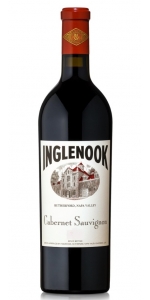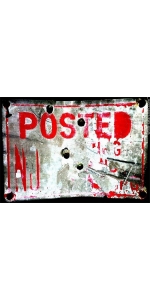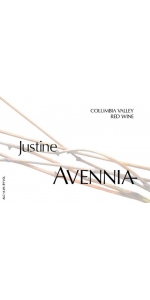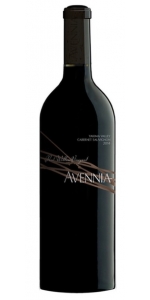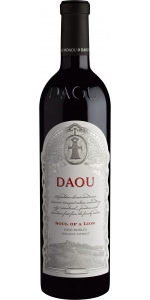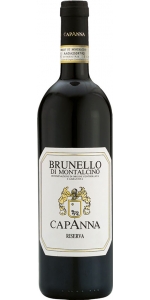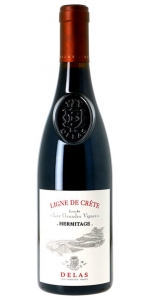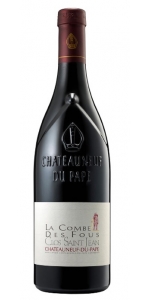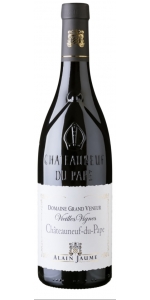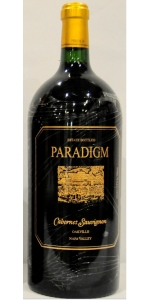Inglenook Rubicon 2016
| Country: | United States |
| Regions: | California California (Napa) |
| Winery: | Inglenook |
| Grape Type: | Cabernet Sauvignon |
| Vintage: | 2016 |
| Bottle Size: | 750 ml |
Inglenook Rubicon is made from 88% Cabernet Sauvignon, 8% Merlot, 3% Cabernet Franc, 1% Petit Verdot
Since its inaugural vintage in 1978, Rubicon has been the Estate's premier red wine, reflecting the soul of the property and expressing Francis Coppola's wish to create a Bordeaux-styled grand wine, that is, "a wine that can please contemporary taste, but with a historical aspect [that defines] our vineyards at their zenith."
Rubicon was named after the small river crossed by Julius Caesar in 49 B.C., declaring his intention to gain control of Rome, thereby launching a civil war among opposing factions. Over time the phrase "crossing the Rubicon" has come to signify any irreversible action with revolutionary intent or the outcome of which holds great risk. True to its uncommon depth, Inglenook's Rubicon continues to be a testament to the finely tuned rendering of a risk well-taken.
Strikingly rich in color and extract, the 2018 Rubicon is unquestionably a precocious, hedonistic wine. The exotic, well-knit aromas and flavors include ripe cassis, allspice, star anise, vanilla and black licorice. Upon entry, this full-bodied wine envelops the palate with its luxurious concentration and supple, silky tannins, supported by vibrant freshness from the balanced acidity, and perfectly-integrated French oak. Very long and expansive in the finish, the 2018 Rubicon will be memorable for decades to come.
Review:
Subtle and complex red with blackberry, black truffle, sweet tobacco and mahogany. Highlights of lavender and violets. Full-bodied and very tight with finesse and tension. Very polished, fine tannins. Long finish. Delicious already, but best after 2022.
-James Suckling 97 Points
Inglenook Rutherford Cabernet Sauvignon is made from 96% Cabernet Sauvignon, 4% Cabernet Franc.
Stunningly deep ruby in color, the 2019 Cabernet Sauvignon opens with heady aromas of brambly black cherry, vanilla, warm brioche, and crème de cassis. As the wine warms on the palate, notes of red cherry, graphite and fennel emerge, as very polished, refined tannins carry the wine into a long, fragrant finish. Layered flavors, good tension, and a perfect integration of wine and oak interact to create this classic expression of Inglenook Cabernet Sauvignon.
Review:
This shows notes of ripe blackberries and blackcurrants with hints of licorice, cloves, walnuts and chocolate. It has full body and a velvety tannin structure. Juicy and vibrant fruit on the palate with a touch of earthiness. Smooth and delicious. Long, fruity finish. Very pure fruit. Try after 2024.
-James Suckling 95 points
All older vintage wines have been purchased from a single collectors cellar. Pictures can be requested before shipment.
No Syrah terroir in Sonoma County compares with Sonoma Mountain’s northwest crown—cool fog-affected mornings, sun-bathed afternoons, cooled by persistent coastal breezes, and temperate evenings. The soils in Steiner’s Syrah blocks — ashy and moondust-like, littered with decomposing sea bed — further contribute to the unique nature of this site. After a 3-vintage hiatus, I am thrilled to be back working with Steiner Vineyard’s Syrah. By its nature, this slow-to-ripen, cool-climate site produces fabulously deep, intense, structured wines. Now, raising a big, brawny Syrah is no rare act of alchemy. It is the wonder of Steiner’s terroir — a magical elegance and beauty, informing the inherent power, depth and intensity — that makes this bottling so special. 2016 produced a classic wine that deftly balances massive flavors and texture, while retaining vital freshness, and a palpable sense of cool. Production was low, so get it while you can. Simply a “WOW” wine, not to be missed.
VINEYARD: Steiner Vineyard. Located at 1,100 ft, on the northwest crown of Sonoma Mountain. CRUSH: Early morning harvest by hand, October 1st, cluster and berry sorted, destemmed and crushed. FERMENT: 5-day cold soaks, followed by 14 day native fermentation in open-top bins. AGING: 20 months, French oak, 100% new, mixture of 300L hogsheads and barrique shapes. Never racked prior to bottling. Bottled unfined, unfiltered.
Review:
"Refined and stylish, featuring a complex core wrapped in multilayered blackberry and blueberry flavors, laced with bitter chocolate, black licorice and smoky meat notes. Drink now through 2030.- Tim FISH"
- Wine Spectator Insider (January 15th 2020), 93 PTS
Avennia Justine Red Blend 56% Grenache, 31% Mourvèdre, 13% Syrah
Justine reflects our belief that Washington is capable of producing world class blends of grape varieties traditional to the Southern Rhone region of France. The name is inspired by one of the great heroines of recent literature, who also sprung from the imagination of the Mediterranean. Dark, seductive, complex, with a chasm of depth: The Justine is a great reflection of Avennia's mission of expression, and Washington's generous terroir.
Tasting Note: Big black cherry, blackberry, hints of orange peel, fresh herbs and loam on the nose. Plush and round on the palate. Dark earthy fruits from the Mourvedre, along with citrus high notes, mountain flowers, jasmine, and savory herbs. Balanced and complex without forgetting its hedonistic roots in the Southern Rhone.
Review:
A blend of 56% Grenache, 31% Mourvèdre, 13% Syrah brought up all in older oak, the 2016 Justine offers a great core of black fruits as well as lots of peppery herbs, earth, and classic meatiness. It looks to be a great vintage for this cuvée."
- Jeb Dunnuck (April 2018), 92-94 pts
Avennia Red Willow Cabernet Sauvignon is made from 100% Cabernet Sauvignon.
The Red Willow Cabernet is a true blockbuster.
Coming from one specific block of 30 year old vines at this iconic vineyard, then strictly barrel selected, this is the essence of powerful, old vine Washington Cabernet. After all of our efforts promoting the idea of the Bordeaux blend, it would take a pretty compelling argument to suspend that idea and make a 100% varietal Cabernet. In 2016 Red Willow provided us with just that. Each time we tasted it in the barrel, the belief grew that this was something special. Something we can't make every year. In the end we were won over, and decided to make a limited amount of this wine. But don't be fooled, as this too is a blend and a selection. Each year as we are tasting the grapes as harvest approaches, we notice that the vines near the bottom of this long, steep west-facing slope, are a little different. The vines at the bottom are in a little richer soil, and get a little more water, so we pick them separately, sometimes even a week or ten days apart, and keep them separate in barrel.
This wine is all from the top of the vineyard, with its lower yield and poorer soils giving more concentration and interest. Then further, nearly every combination of new and used French oak barrels were trialed to find the best blend. It's not enough just to use the four best barrels, but to trial each combination to see how they complement each other. For a wine with this much mass, 100% new French oak was used for the first time at Avennia. It is a wine that needs a little cellaring to start, but should last a very long time.
Review:
Made from 100% Red Willow Cabernet Sauvignon, the 2016 Cabernet Sauvignon Red Willow is another gem from this great winemaker. Deep purple-colored, with a huge perfume of blackberries, crème de cassis, cedarwood, pencil lead, and graphite, it hits the palate with medium to full-bodied richness and depth, nicely integrated acidity, and building, ripe tannins. Give bottles 3-4 years and it too will cruise for 15-20 years or more.
- Jeb Dunnuck (April 2019), 95 Points
Bursting from the glass with impeccable precision, the 2016 Cabernet Sauvignon Red Willow Vineyard is the real McCoy, boasting a focused frame of fruit on the nose that shows depth and breadth in layers of aromas—blackberry, dark cherry, licorice and clove-laced spices flutter over a bed of roses. I can't stop smelling this wine! Full-bodied, the wine unfolds and expands across the palate with complexity, tight structure and beautifully managed tannins, ending with a thought-provoking and long-lingering finish. The wine has a still-tight expression that will age beautifully for years to come. It will serve you well to seek out a bottle of this world-class wine. Only 140 cases were made.
- Wine Advocate 95 Points
Inglenook Rubicon is made from 93% Cabernet Sauvignon 7% Cabernet Franc.
Since its inaugural vintage in 1978, Rubicon has been the Estate's premier red wine, reflecting the soul of the property and expressing Francis Coppola's wish to create a Bordeaux-styled grand wine, that is, "a wine that can please contemporary taste, but with a historical aspect [that defines] our vineyards at their zenith."
Rubicon was named after the small river crossed by Julius Caesar in 49 B.C., declaring his intention to gain control of Rome, thereby launching a civil war among opposing factions. Over time the phrase "crossing the Rubicon" has come to signify any irreversible action with revolutionary intent or the outcome of which holds great risk. True to its uncommon depth, Inglenook's Rubicon continues to be a testament to the finely tuned rendering of a risk well-taken.
2016:
After four years of drought, a winter with average rainfall was welcome, as it provided ample soil moisture for a strong start to the 2016 growing season. Average late-spring temperatures and limited precipitation minimized the risk of frost during mid-May bloom, ensuring average yields. June closed with a heat spell, slowing vine canopy growth at the ideal time. Harvest of the blocks contributing to the 2016 Inglenook Rubicon blend occurred under optimum conditions from September 6th through September 27th.
Ideal harvest conditions endowed the 2016 Rubicon with the three elements associated with a truly great wine from the Rutherford appellation: complexity, balance, and elegance. The aromas are intense and focused with top notes of creamy, sweet vanilla, and black licorice wound around a core of exquisitely ripe black cherry and crème de cassis. This refinement extends directly to the palate, where the wine is both broad and deep with sensuous, silky tannins. Supremely balanced in terms of both opulence and complexity, ripe black fruits and an ultra-smooth texture provide an impressive crescendo to a very long finish.
Review:
The 2016 Cabernet Sauvignon Rubicon is a wine of total precision and class. Translucent and energetic, with distinctly mid-weight structure, the 2016 is a wine of reserve, tension and breeding. Shy at first, the 2016 has a lot to offer, but it needs a number of years in bottle to be at its most expressive. Cedar, tobacco, licorice and wild cherry add the closing nuances.
- Antonio Galloni 97 Points
Inglenook covers approximately 1,700 contiguous acres with nearly 235 acres dedicated to vineyards. The variations in the Estate's topography reflect the great diversity of Napa Valley itself–-from the loamy, well-drained soils at its rear to an expanse of vineyards with deeper, but finer soils located in front of the Chateau–-and contribute to the singularity of Inglenook's terroir, a complex term incorporating the natural growing conditions of the specific site as well as the winemaker's signature––with some ineffable quality arising from the two–-which distinguish the wine's personality as unique.
Francis Ford Coppola is best known as the six-time Academy Award-winning director of such epic films as The Godfather trilogy and Apocalypse Now. As a writer, director, and producer, he has been a central figure in contributing to the shape of contemporary American cinema. His creative pursuits run wide, however, and he is one of those rare individuals who can turn his dreams into viable realities, perhaps because of his clarity in seeing life as being full of all the possible ways to tell stories wanting to be told.
The whole of the 1970s was an extraordinary time in his career—writing, directing, and/or producing The Godfather (1972), American Graffiti (1973), The Godfather Part II (1974), The Conversation (1974), and Apocalypse Now (1979), a bevy of films earning him 12 Academy Award nominations, five Academy Awards, and two Palme d'Or awards from the Cannes Film Festival. It was during this same period that Francis embarked on an entirely different venture, to tell an entirely different story that would further develop the course of one of America's most venerable wine estates—Inglenook.
Ever since 1975, when he purchased the major portion of what was then under corporate ownership, Francis vowed to reunite Inglenook's land, the land to its name, and Inglenook's name to its former integrity. He established his own estate winery of Niebaum-Coppola that same year, and produced the first vintage of his flagship red wine, Rubicon, in 1978. More wines were to follow under the Niebaum-Coppola Estate label, with Francis steadily working towards his ultimate goal of "restoring Inglenook to its rightful place in history." In 1995 he bought the remaining part of the original Inglenook property, renovating its Chateau—which had stopped making wine—in both aesthetic appearance and function as a winemaking facility. And then in 2011, after nearly 40-years worth of committed resources and resolve, he acquired Inglenook's name and trademark, making it whole once again—in presence and spirit—with a winemaking approach that now honors its present and future welfare.
An inveterate traveler, Francis always looks to new experiences as sources of insight and, as a way of sharing his delight in exploring foreign sensations—sights, sounds, tastes—has opened several luxury hideaways in Central America, Argentina, and the exceptional Palazzo Margherita in southern Italy. He launched Zoetrope: All-Story, a quarterly magazine of short fiction and one-act plays, in 1997, and is the best-selling author of The Godfather Notebook (2016). Fascinated with the potential of combining theater, film, and television into one art form, he most recently authored Live Cinema and Its Techniques (2017), a book filled with descriptions and discussions of the methods involved in instantaneously broadcasting performance-based productions that retain the spontaneity of a live event. He is presently working on a cycle of screenplays that he intends to produce in this experimental medium.
DAOU Vineyards Soul of a Lion is made from 78% Cabernet Sauvignon, 12% Cabernet Franc, 10% Petit Verdot.
The 2019 Soul of a Lion is a blockbuster vintage that showcases how Bordeaux varieties are remarkably suited to the terroir of DAOU Mountain. This wine explodes from the glass with a kaleidoscope of aromas and flavors, including blackberry, blueberry, black currant, dark cherry, sweet tobacco, and licorice. An added floral dimension imparts an integrated sense of elegance and freshness. While full-bodied with ultra-high phenolic levels, this wine maintains its evenness and poise through an extraordinarily long finish. Structured, balanced, and powerful, the 2019 Soul of a Lion will reveal its full magnitude after several years of careful cellaring.
Review:
The 2019 Soul Of A Lion is a blend of free-run Cabernet Sauvignon, Cabernet Franc, and Petit Verdot, aged 22 months in 100% new French oak. Opaque ruby in color, it offers aromatic contrast between dark, savory cherry fruit, chargrill and graphite, and top notes of green pepper and rose petals. The palate explodes with detailed flavors and its tannins are already resolved and chocolaty, with seamless acidity and exotic spicy layers emerging on the extended finish. Wow!
-Wine Advocate 97+
Capanna Brunello di Montalcino Riserva 2015
TYPE: DOCG
BLEND: 100% Sangiovese carefully selected in the oldest vineyards and only of the best harvests.
VINIFICATION:
Alcoholic fermentation with maceration of the skins (30-35 days) at a controlled temperature and spontaneous malolactic fermentation, both in truncated cone-shaped Slavonian oak vats.
AGEING:
In Slavonian oak casks of 10 to 25 hl for over 40 months; followed by ageing in bottles for at least 15 months.
NOTES:
Colour: deep ruby red, strong, lively.
Bouquet: very intense and complex, fruity and spicy, with red fruit, jam and liquorice shades; great prospects of future development.
Taste: great structure in the acid-tannin components, well supported by the soft ones; extremely persistent.
Food pairings: roast red meats, game and very aged cheeses.
Review:
Powerful, sparkling garnet red. Rich, very appealing nose with notes of ripe raspberries and fresh plums, some liquorice and fine spice notes in the background. Grippy, fine-meshed tannin on the palate, builds up in many layers, salty, good tension, very long finish in the finish.
- Falstaff 98 Points
Delas Hermitage Les Grandes Vignes Ligne de Crete is made from Syrah.
The nose discloses aromas of spice and leather intertwined with deep berry aromas (blackberry, redcurrant) and heady floral notes, liquorice and incense. Its richness, complexity and elegance are by no means a contradiction. The finest granite soils of the Hermitage hillside are to thank for this wine's incredible minerality and finesse. The wine is rich and dense on entry to the palate, where it shows an elegant, broad and flavorsome character. The ripe, smooth and well-integrated tannins contribute to the wine's powerful yet harmonious structure. The palate reveals the same aromas as those found on the nose with nuances of blueberry, raspberry, violet and bitter chocolate. Ligne de Crête is characterized by its exceptional structure, harmony and balance.
This remarkably smooth and elegant wine makes the perfect partner for a pigeon pie, beef tartare ravioli or a roast fillet of deviled duckling with cranberries. It also makes an excellent choice for woodcock, hare "à la Royale" or even a roast rack of lamb in a herb crust.
Review:
Whiffs of espresso, ore and charred meat mingle into thunderous flavors of crème de cassis and roasted plums in this wine. A single-site expression of Les Grandes Vignes from a ripe yet fresh vintage, it's a showstopping Syrah marked with a creamy texture and ripe tannins. Hermitage is not known for youthful pleasures but this rare bottling embraces the hedonism of adolescence along with its potential to gain power and complexity far beyond 2050. Anna Lee C. Iijima
-Wine Enthusiast 97 Points
Inky ruby color. Expansive, smoke- and mineral-accented black and blue fruits, licorice, smoky bacon, mocha, violet and licorice on the highly perfumed nose. Appealingly sweet, mineral-accented cassis, boysenberry, fruitcake, floral pastille and vanilla flavors show superb depth and become spicier with aeration. Shows superb detail and mineral lift on the youthfully tannic, extremely persistent and incisive finish, which features resonating floral and exotic spice notes.
-Vinous 97 Points
Clos Saint-Jean is a 41-hectare estate in Châteauneuf-du-Pape run by brothers Vincent and Pascal Maurel. Considered by many critics and wine-writers as the preeminent estate espousing the modern style of winemaking in Châteauneuf, this cellar is one of the oldest in the region, having been founded in 1900 by the greatgreat-grandfather of Vincent and Pascal, Edmund Tacussel. A short time after its founding and well before the AOP of Chateauneuf-du-Pape was created in 1923, Edmund began bottling estate wines in 1910.
The farming at Clos Saint-Jean is fully sustainable due to the warm and dry climate, which prevents the need for chemical inputs. Instead, Vincent and Pascal employ organic methods for pest control, mainly pheromones, to prevent pests from taking up residence in their vines, a process called amusingly enough in French, confusion sexuelle. The vines tended manually, and harvest is conducted in several passes entirely by hand.
Combe des Fous literally means, the hill of the fool. The hill, in this case, is located in the far southern reach of Le Crau which was left barren for many centuries because the layer of galets was so exceedingly deep that everyone assumed vines could never survive there. The fool in this situation is Edmund Tacussel, the great-great-grandfather of Vincent and Pascal Maruel who planted a Grenache vineyard on this site in 1905. That old-vine Grenache form the heart of this cuvée with a small amount of Syrah, Cinsault and Vaccarèse. La Combe des Fous is only made in the best vintages.
Review:
Pumps out heady raspberry, mulberry and blackberry compote notes that keep form and direction, thanks to a roasted apple wood spine and flanking ganache, garrigue and warm earth notes. Seriously grippy finish. Grenache, Syrah, Cinsault and Vaccarèse.
-Wine Spectator 96 Points
The 2020 Châteauneuf Du Pape La Combe Des Fous is a normal blend of 70% Grenache, 20% Syrah, and the rest Vaccarèse and Cinsault. Beautiful, full-bodied aromas and flavors of ripe black raspberries, violets, ground pepper, lavender, and herbes de Provence all emerge from this gorgeous barrel sample, and it shows the pure, fresh, yet still concentrated style of the vintage brilliantly.
-Jeb Dunnuck 94-97 Points
These are Magnum bottles!
Grand Veneur Chateauneuf Du Pape Vieilles Vignes is made from 50% Grenache, 40% Mourvedre, 10% Syrah
Matured in concrete vats (40%) and oak casks (60%)
It boasts an inky/purple color in addition to a gorgeous perfume of crushed rocks, jammy black fruits, charcoal and graphite. Blackberry aroma with an air of dates pressed in alongside – this is sweet-noted. It is easy to appreciate, a sleek and stylish start. The palate holds excellent fruit that runs well and has kick. Its tannins move round freely and a minted finale comes forward. Its dark fruit is tasty, darkens on the finish, where tar and char from its oak enter. It is all very much together, a bundle of harmony, and will gain local attributes as it ages.
An outstanding Chateauneuf du Pape which display the best of its terroir.
The vines are 50 to 100+ year old. They are planted on red clay soils covered with pebble stones.
Harvest is destemmed and crushed. Fermentation temperature is controlled at 30°C. Vatting period of 18 to 20 days. Matured in concrete vats (40%) and oak casks (60%).
The vineyards are located in the north of Châteauneuf du Pape. GRAND VENEUR «Vieilles Vignes» cuvee is produced from the older vines. Thanks to time and an organic growing, roots go very deep in the soil. Yields are naturally low and grapes highly concentrated.
The vines are 50 to 100+ year old. They are planted on red clay soils covered with pebble stones.
Winemaking and aging
Harvest is destemmed and crushed. Fermentation temperature is controlled at 30°C. Vatting period of 18 to 20 days. Matured in concrete vats (40%) and oak casks (60%).
Pair with venisson, duck, braised lamb or strong cheese.
Review:
"The 2019 Châteauneuf Du Pape Vieilles Vignes is based on 45% each of Grenache and Mourvèdre, with the balance Syrah, all destemmed and raised in 55% new French oak. Gorgeous cassis, violet, graphite, fruitcake, and peppery herbs define this brilliant effort, and it's full-bodied, with a pure, seamless texture, wonderful tannins, and one heck of a great finish. This magical 2019 is going to benefit from 4-5 years of bottle age (it's brilliant even today) yet keep for 20 years or more. Châteauneuf du Pape lovers need to have this in their cellar!"
- Jeb Dunnuck (November 2021),99 pts
LASER ETCHED MAGNUM!
Paradigm Cabernet Sauvignon is made from 90% Cabernet Sauvignon, 8% Merlot, 1% Petit Verdot, 1% Cabernet Franc
20 months in French oak (only about a third of that is new oak) and for 20 more months in bottle before release
Our winemaking "style" is solely determined by this place or terrior we call "Paradigm." Winemaking is agriculture when you own your vineyards and are able to farm them to promote the very best Earth will give you. All of our selections of wines are made from five varietals on the estate. Every wine is 100% farmed and grown by us.
Complexity in our wines supported by luscious fruit and acidity is our hallmark. Our efforts during harvest and barrel cellaring concentrate on maintaining the freshness from the first day we handpicked each vineyard block. Simple winemaking protocols are employed while crucial “timing” oriented winemaking decisions rule each day.
Dark Cabernet color with beautiful aromas of black cherry, cassis, plus 5-spice, vanilla. Big, ripe and mouthcoating across the palate. The flavors are similar to the aromas with ripe fruit, berry/cherry pie, moderate tannins, and nice length. This wine shows enough structure to be age-worth, yet soft and balanced enough to enjoy upon release. Flavors linger in this tasty, dense wine. Tastes like Oakville. -Heidi Barrett
- back
La Jota Howell Mountain Cabernet Franc is made from 100% Cabernet Franc.
The 2019 Cabernet Franc opens with aromas of cassis and graphite when poured in the glass. The firm tannins set the stage on the palate melded with rich flavors of boysenberry and pain de grille with a silky mouthfeel and lingering finish.
Review:
Savory in black pepper, smoked meat and cigar box, this wine is high-toned aromatically, with lovely hints of violet and dried herb, sage and bay leaf. Mountain-sturdy tannins give it structure, power and room to age, with lasting acidity to keep it fresh. Enjoy best from 2029–2039
.-Wine Enthusiast 95 Points
Jean Reverdy Sancerre Blanc is 100% Sauvignon Blanc
Single vineyard. Vinification: cold fermentation in stainless steel tank, no oak, no malolactic fermentation.
Sweet, fruity and clean. White flowers (acacia, jasmine) and citrus fruits aromas. Perfectly balanced.
A delicious wine, perfect with fish dishes, especially salmon, and a local goat cheese Crottin de Chavignol.

